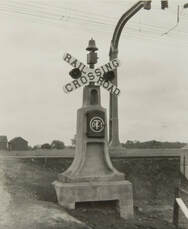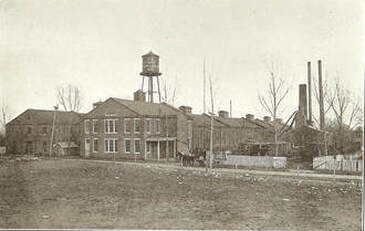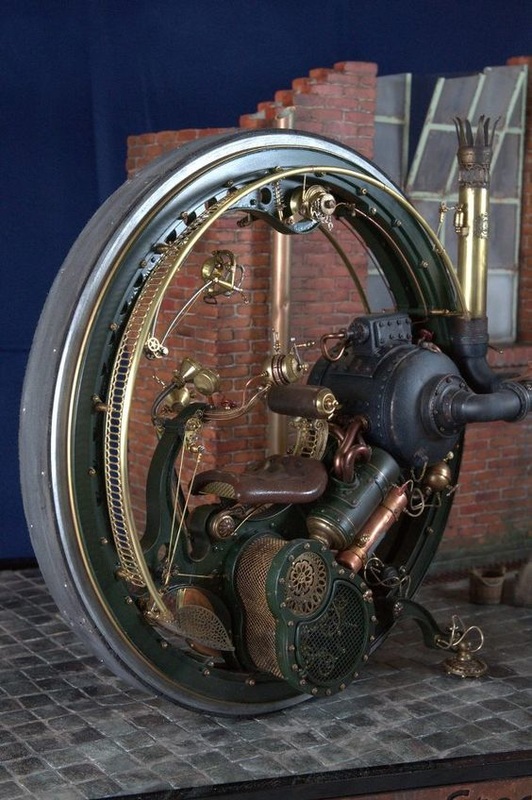HSP HISTORY Blog |
Interesting Frederick, Maryland tidbits and musings .
|
 The author's maternal grandmother, Alice Galloway (ca.1928) The author's maternal grandmother, Alice Galloway (ca.1928) My boys and I had a recent conversation during dinner in which they asked me about important inventions that I have witnessed over my lifetime. Possessing a college degree in Communications, I have marveled at the major advancements in my field of study since I graduated in 1989. Technological advances have definitely made the world an even smaller global community than that professors told us about three decades ago. Household computers, the internet, digital video recorders and smartphones top the list. The boys and I got talking about different eras in history and what my ancestors likely experienced, and what they would have reported to us should they had been part of this particular dinner conversation. We looked at things that evolved over the lifetimes of my parents, grandparents, great-grandparents, and great-great-grandparents. These included overarching achievements such as the advent of machines during the industrial revolution period, public improvements such as street paving and lighting, household commodities such as electricity and indoor plumbing, transportation innovations featuring the shift from horse and buggy to the automobile, (not to mention the local possibilities afforded by the interurban trolley and nationally/internationally via the airplane, weaponry advances with various wars, toys and games, and food storage/cooking aids (refrigerators, ovens, toasters, barbecue grills, microwave ovens, ice makers, etc.).  Inventor Extraordinaire, McClintock Young, Jr Inventor Extraordinaire, McClintock Young, Jr It’s always been important to me too use Frederick City and County for context when looking at the impact of inventions and innovations that swept our country. In the same manner, Frederick County has had its share of important inventors and innovators who helped change the nation. Off the top of my head, two individuals of note stand out immediately. I have had a familiarity with both gentlemen in the process of past research with documentary projects. These are McClintock Young of Frederick and Thurmont’s Richard O’ Toole. McClintock Young (1836-1913) was the holder of over 100 patents over his lifetime, one of which was for the creation of an automatic “friction match”-making machine (sold to the Diamond Match Company) in 1870. Nearly 30 years later (1899), Young was responsible for a revolutionary brush producing technology which added to the heightened success of Frederick’s Ox-Fibre Brush Company. His achievements were honored more recently by having a local distillery named for him. During this same time period, Richard O’Toole (1848-1918) busied himself with improving life’s lot. O’Toole hailed from Mechanicstown, a fitting name for a place full of tinkerers and experimenters. This was the original home of “great invention” in Frederick County. It was here in the 1830’s that America’s first friction match was invented by Jacob Weller, BS (blacksmith) and son Joseph sometime in the 1830’s. Three score (60 years) later, about the time of a town name change to Thurmont (another great “invention” credited to Catoctin Clarion newspaper publisher Charles E. Cassell), O’Toole received a patent for inventing the American Electric Magnetic Crossing Signal for protecting highway crossings of railroads.  Loy's Station Covered Bridge spanning Owens Creek near Rocky Ridge (MD) Loy's Station Covered Bridge spanning Owens Creek near Rocky Ridge (MD) His first patent was obtained in 1892, with one of Richard O’ Toole’s closest business associates having strong connections within the industry. Irvin W. Loy began a storied career with the Western Maryland Railroad in 1875 and quickly rose up the ranks. Loy (1846-1914) was a talented designer and architect who was head of the maintenance department for the railroad. Over his tenure, he built many bridges for the Western Maryland line, and would be responsible for the development of Pen Mar Park in nearby Cascade (MD). Loy built a fine residence called “Glenhurst” in Mechanicstown/Thurmont, helped design the roof of the former Thurmont Town Hall, and would have a nearby rail stop named for him—Loys Station. Today, this locale is better known for its covered bridge.  Back to Richard O’Toole, his American Signal Company attracted investors fast, and soon his Godsend device was being installed by railroads all over the country and world. His main office at one time was moved to Baltimore, 100 West Fayette Street. Unfortunately, the company was undercapitalized, big city investors pulled out and the company disbanded before reaching its full potential. Mr. O’Toole settled into a humble life back in Thurmont and became an expert in auto-chromatic photography. He is credited with making the first panoramic view of Thurmont. He also specialized in photographing dead people. A few years ago while shuttling through microfilm in C.Burr Artz Library’s Maryland Room, I came across a local inventor that I was not familiar with—William M. Lease. I suddenly marveled at an article found in the June 29th 1901 edition of the Daily News. Due to its length, and scientific complexity, I was inclined to make a copy and had to read more than once to understand the spirit of Lease’s invention. On June 11, Lease, a Mount Pleasant native now living in Baltimore, was given a United States patent (Patent No. 676,193) for his “Pleasure-Railway.” He would also receive a like patent (No. 135710) from the Deutchen Reiche (German Empire 1871-1943). The US patent for the “Lease Spheroid Pleasure Wheel” reads: "This invention relates to the means for the transportation of freight or passengers from place to place; and its object is to provide a novel construction of a monocycle car movable upon a single rail and comprising a suitably large wheel within which is suspended the car-body and motor for driving the wheel." Basically, this colossal monocycle featured plans for a 40-foot wheel equipped with 30 total baskets, each carrying four passengers. Mr. Lease boasted that his invention would change transportation forever, allowing a traveler to cross the continent in one day’s time. Read it for yourself:  Luckily, Mr. Lease didn’t quit his day job as a postmaster. He would never see the “Pleasure Wheel” come to fruition. However, he likely did see glimmers of his creation utilized as the premise for carnival amusement rides. I guess you could say he was partially successful, in a “round-a-bout” way. William M. Lease continued out his life working for the US Postal Service, a career that spanned 43 years. He passed away in 1953 at the age of 87 and is buried in Baltimore’s Mount Olivet Cemetery. History Shark Productions presents: Chris Haugh's "Frederick History 101" Are you interested in Frederick history? Want to learn more from this award-winning author and documentarian?
Check out his latest, in-person, course offering: Chris Haugh's "Frederick History 101," with a 4-part/week course on Tuesday evenings in late August/early September, 2023 (Aug. 22, 29 & Sept 5, 12). These will take place from 6-8:30pm at Mount Olivet Cemetery's Key Chapel. Cost is $79 (includes 4 classes). For more info and course registration, click the button below! (More courses to come)
1 Comment
6/3/2016 04:24:58 am
Great article, Chris! Quite interesting. Hope we see more about some of the inventors from Frederick County.
Reply
Leave a Reply. |
AuthorChris Haugh Archives
February 2024
Categories |
Proudly powered by Weebly




















 RSS Feed
RSS Feed